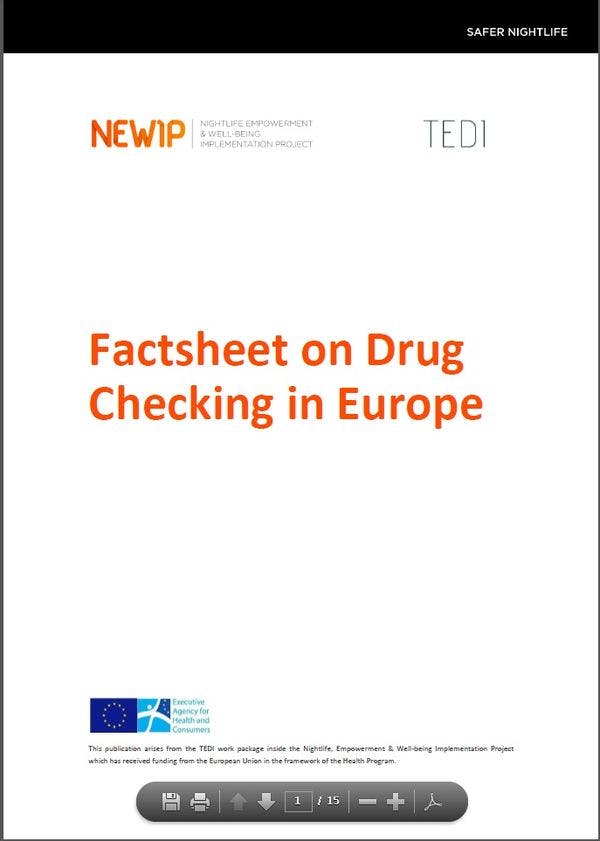Factsheet on Drug Checking in Europe
Drug use statistics estimate that approximately 14.5 million Europeans have used cocaine at least once in their lives (4.3% of adults aged 15–64 years), 12.5 million have tried amphetamines and some 11 million have tried ecstasy.
Most of the countless recreational substances currently available, except alcohol, are illegal throughout Europe. Unfortunately, years of experience show that repressive measures rarely prevent people from taking drugs. Moreover, illegal drug use often takes place in dubious situations under ambiguous circumstances, which arise as a consequence of the many unspo-ken rules that currently govern the illegal market, but are also influenced by where the drugs are produced, distributed and sold to consumers. The clandestine nature of the illegal drug trade and the drive to maximise profits are two of the major forces that help shape this mar-ket. One of the adverse effects of these conditions is that illegal drugs are often cut with other, cheaper substances to increase profits or they are of dangerously high dosages.
The lack of concrete knowledge regarding the active compounds and doses of various drugs poses a health risk with often fatal results as has been seen in countless situations. Drug Checking represents a direct response to the need to reduce the health risks of illegal drug use. Although Drug Checking has been around for some time, it remains a controversial approach. Some countries have fully embraced it, emerging as an integral part of the health care system, while other nations have shown a reluctance to implement Drug Checking on any level.
This publication assembles the answers to many frequently asked questions concerning Drug Checking. The aim is to give a concise overview of Drug Checking today.
Keep up-to-date with drug policy developments by subscribing to the IDPC Monthly Alert.
